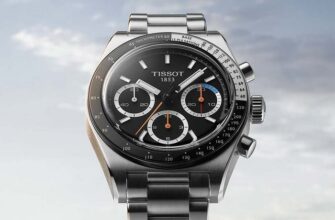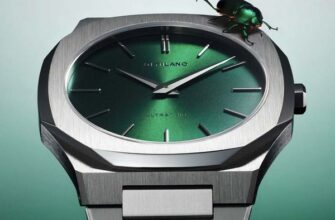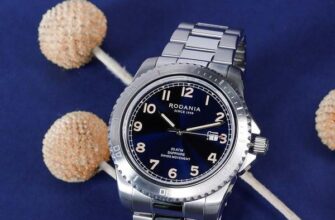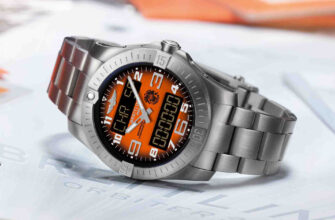Mechanical chronographs will never leave the stage: they are admired as works of art, they are collected. Chronographs are like toys for big boys and are strongly associated with passion, technical excellence and fair sport, and these things are sure to be important to us forever. Let's leave quartz chronographs out of this story - their accuracy is impeccable, the design can be very cool, but it is quite simple to produce them, and we are not looking for simple ways, so give us a mechanic!
By their design, chronographs are modular, when the stopwatch module is superimposed on top of the usual base watch movement and connected to it, and integrated, when it is initially assumed that the caliber will be equipped with a stopwatch. Of course, integrated ones are more valuable and work better, but designing and producing your own chronograph movement is still one of the most difficult tasks in watchmaking.

The Ball Engineer Hydrocarbon Submarine Warfare Ceramic Chronograph watch uses the self-winding caliber RR1402, this is the base ETA 7750. The reliability of the precise operation of the chronograph is ensured, among other things, by the patented Amortiser anti-shock system, which consists of a protective anti-magnetic ring around the mechanism. This ring absorbs the energy of side impacts and the rotor blocking device, which prevents frontal impacts from being transmitted to the watch movement and causing sudden and strong oscillations of the rotor. When the rotor is locked, the available energy is used up, if the watch is used carefully and there is no danger of shock, you can unlock it and resume automatic winding using the switch on the case back.
What is a chronograph and how does it work
What is a chronograph anyway? This is a watch with an independent second hand, which can be started, stopped and reset at any time, measuring different events. How does a chronograph work?
It works like a car's clutch.
Think of the engine as the base caliber of a chronograph watch. It is necessary to start the engine, and it constantly works. The clutch allows you to either use the energy of the engine, or disconnect it. All chronographs have a "clutch" that, at the behest of the owner, connects and disconnects the independent second hand and movement. In order to understand exactly how a chronograph works, it is first necessary to better understand how a watch mechanism works in general.
The movement of a watch is a flat mechanical structure, consisting of a power source called a winding barrel (with a coiled spring inside), three wheels, and an adjusting body known as an escapement. Each wheel located between the drum and the escapement (central (minute), third (intermediate) and fourth (second)) moves faster than the previous one. And despite the fact that the drum rotates very slowly (one revolution can take more than a day), the fourth wheel of the transmission system makes a revolution in exactly 60 seconds.
Where does this precision come from, you ask? The seconds wheel is engaged with an escapement (consisting of the escapement, fork and balance) which acts as a "crane". This "tap" at regular intervals opens and closes, releasing and blocking the flow of energy. In this way two things are achieved. On the one hand, the drum does not erupt all its force at once ahead of time, and on the other hand, the escapement acts as an hourly metronome that divides time into equal fractions of a second.
A chronograph is an auxiliary movement built on top of the base movement and powered by its energy. To put it quite simply, it consists mainly of a wheel located in the very center of the watch and connected to an independent second hand.
Another essential component of any chronograph is the clutch, which supplies power to the chronograph wheel when needed. When the wheel is engaged, the chronograph second hand runs; when the clutch is released, the second hand stops. If you do not go into details, then everything is really very simple.
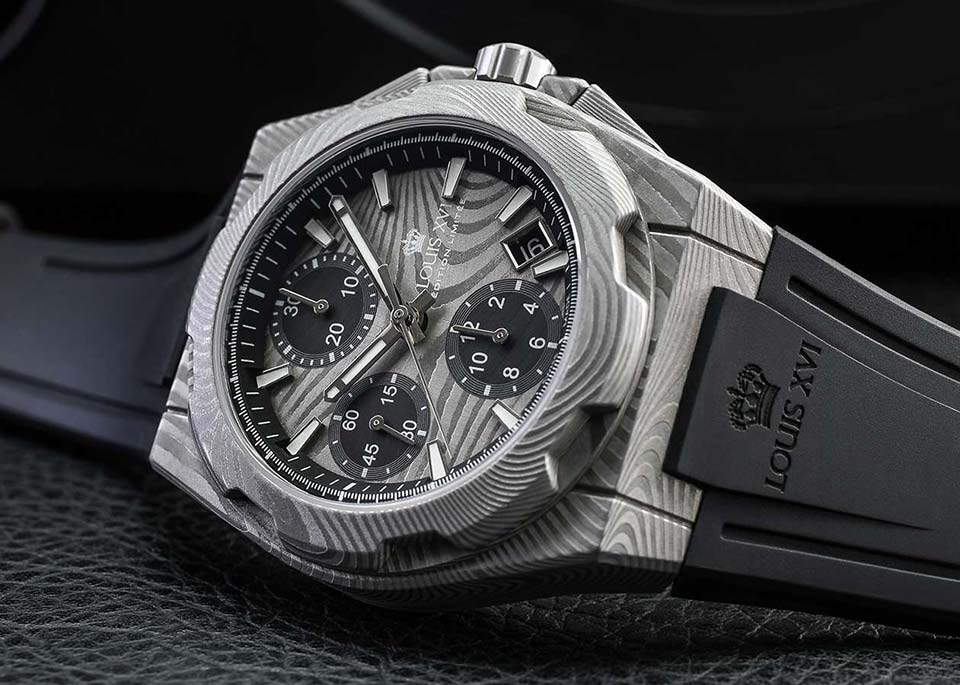
The chronograph is a symbol of active, exciting and often dangerous activities. The Louis 1201 La Vauguyon Damaskus Stahl 16 chronograph model uses the self-winding Sellita SW500 caliber, which is also the base ETA 7750. The chronograph itself is a rather aggressive complication, the Damascus steel case only enhances this external effect.
Early chronographs
As many inquisitive people know, the very word "chronograph" is somewhat confusing. "Chronograph" comes from the addition of the Greek words chronos - "time" and grapho - "I write", that is, literally means "writing time". The watchmaker Nicolas-Mathieu Rieussec was considered the creator of the first “writing time” for quite a long time, the mechanism presented by him in 1822 measured time intervals, leaving an ink mark on interchangeable paper dials, but since 2013 we know that the first chronograph, moreover, in the usual way for us form, created by Louis Moinet in 1816. The Moinet Chronograph was capable of measuring time intervals to the nearest 1/60th of a second for 24 hours. The third counter, as the master himself called the device, was used by him for astronomical observations; the main central hand measures sixtieths of a second, the minutes counter is located at the 11 o'clock position, the second scale is located at the 1 o'clock position, and the 6-hour scale is at the 24 o'clock position.
"Chronograph" Mathieu Rieussec was a box, did not have an additional button for resetting the counter, and the chronograph, created by Louis Moinet, is much more like a two-button chronograph that is familiar in our time. But I partly agree with those who consider modern chronographs to be "chronoscopes" - after all, they do not write anything, but show.
The name of Mathieu Rieussec, by the way, is associated with the modern collection of Montblanc watches, where the idea of the inventor is beaten (even though it is Montblanc, but they did without ink), and in fairness it should be noted that Montblanc recognized the primacy of Louis Moinet and stopped calling the invention of Mathieu Rieussec “the first the world's chronograph."
The famous inventor of watch complications, Abraham-Louis Breguet, followed the path of Mathieu Rieussec, in 1822-1823, together with Frederick Louis Fatton, he created a pocket ink chronograph - chronographe encreur. Breguet's ink chronograph had two obvious drawbacks. Firstly, he was able to measure only very limited time periods, and secondly, his owner constantly got dirty in ink: the ink reservoir had to be topped up, and the porcelain dial had to be wiped after each measurement.
Despite all the inconveniences, ink chronographs remained in use for a surprisingly long time. However, almost immediately began the search for a more successful design. Another companion of Breguet, Louis-Frédéric Perrelet, invented the device that became the prototype of modern split chronographs and applied for a patent in 1827.
And on May 14, 1862, Adolphe Nicole received a patent for the world's first pocket watch with three main functions that are integral to all subsequent chronographs: start, stop and reset the hands to zero. The 1862 patent also indicated one of the most important details, which to this day is found in all mechanical chronographs - a heart-shaped cam necessary for resetting the hands. Due to its unusual shape, the cam under the pressure of the hammer from any position invariably turns to the hammer with its flat side, bringing the arrow connected to it to its original position.
In hindsight, of course, it is easy to think that the invention of Adolphe Nicole was a matter of technology, but, in truth, only a very gifted designer could come up with such a thing. This method of zeroing the hands turned out to be so elegant and convenient that over the next almost 150 years it has not undergone the slightest change.
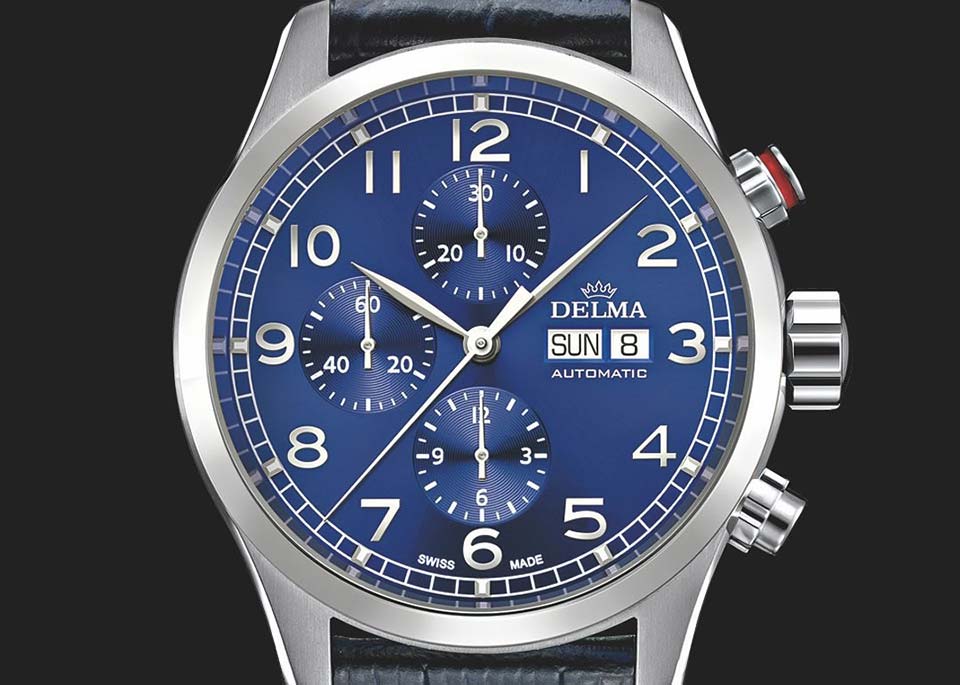
The Delma Pioneer Chronograph functions thanks to the ETA 7750, and we add to the collection of interesting information about this “workhorse” that it was one of the first movements that were created using computer technology.
World War I
The first chronograph was created by the royal watchmaker Rieussec to more accurately measure the time at the royal races, but by the beginning of the 20th century, change was in the air: horse racing had become a public spectacle, and kings had largely disappeared. And although it cannot be argued that the transition from pocket watches to wrist watches was entirely due to the First World War, wrist watches and even wrist chronographs began to be advertised already in the pre-war period.
One ad by Moeris is dated, for example, 1910 - after all, it was the need of soldiers and officers to find out the time without unbuttoning their overcoats and without getting into their pockets that allowed wristwatches, which were not very popular either among buyers or watchmakers, to firmly enter into use. In the post-war years, as industrial society healed its wounds and a wealthy middle class rose to its feet, so did the status of the chronograph.
From an expensive toy of the aristocracy and a useful military instrument, it turned into a landmark phenomenon, into a symbol of the progressive thinking of the people of the “jazz era”. In an era of craze for cars and aviation, chronographs, including models with tachymetric scales, were accepted with a bang. Like most wristwatches of those years, chronographs of the "jazz age" were a fashion accessory for people from high society, and they were worn not only by riders, motorists and pilots, but also by those who had never sat neither in the saddle, nor behind the wheel, nor in the cockpit.
All chronographs of that time were single-push-button, and in them, unlike two push-buttons, it was impossible to restart the hand without resetting to zero. But they could fully boast of the dapper elegance inherent in all wristwatches of the 20s of the last century.
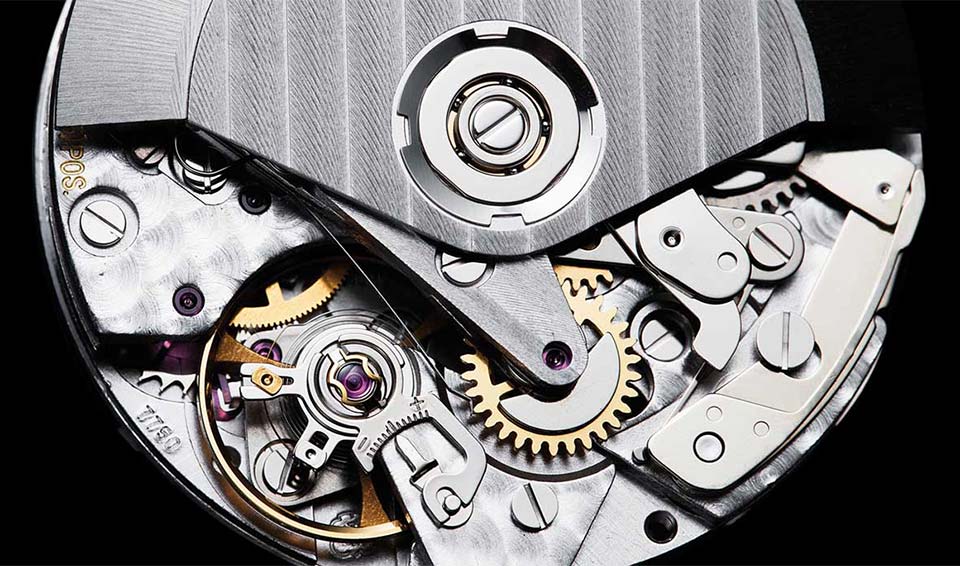
ETA 7750 is just one of the important episodes in the glorious history of watchmaking with the hashtag “chronographs”. History no less turbulent than the history of society as a whole. Of course, you can buy a watch without thinking about what's inside, rightly relying on the perception of appearance, but you must admit, it's a little more pleasant to know what glorious "motor" ensures their smooth operation.
The appearance of two buttons
The economic crisis of the 30s somewhat dampened the unbridled brilliance of the Art Deco style that flourished in the 20s, and chronographs became more restrained and practical. However, this did not affect their popularity in any way, and, while remaining useful and functional devices, they have not lost their fashionable charm.
In the 30s, an important event took place - a two-button chronograph appeared. Until that moment, all chronographs were single-push-button: the role of the control element was played by a button, either built into the crown or located slightly to the side of it. Of course, the main drawback of this system was that the measured time intervals could not be added: the first press of the button started the chronograph, the second it stopped, and the third it set to zero.
The advantages of a chronograph, with which one could take several measurements in a row, adding their results one to another, were clear to everyone, and Breitling received the first patent for a two-button design: a patent for a two-button chronograph (number 172129) she received in 1933 It is curious that in the very first design, the buttons worked in the reverse order: at 4 o'clock there was "start / stop", and at 2 o'clock - "reset". However, quite soon (in 1935) Breitling changed the assignment of the buttons and switched to the scheme most common today: "start / stop" - at 2 o'clock, "reset" - at 4 o'clock.

The Auguste Reymond Cotton Club Chronograph watch is powered by the AR1350 caliber, aka the base ETA 7750. It's usually easy to guess which movement is used in a chronograph watch by looking at the layout of the dial - this classic arrangement of counters most likely indicates that inside the 7750 or its " close relative".
Masterpieces of Precision
The period between the birth of the two push-button chronograph and the introduction of the first self-winding chronographs (1969) saw the heyday of classic chronograph movements, which today are highly prized by collectors. Moreover, some of the movements of that time, only in an updated version, can be found in the cases of luxury chronographs of our day.
Among those movements, the works of Longines are especially appreciated, which in the late 30s created the caliber 13ZN - a chronograph with two additional dials, a Breguet spiral and a balance frequency of 18 vph. Since the accuracy of a chronograph is directly dependent on the quality of the main wheels and the escapement, the best chronographs of that era were made with fantastic care and craftsmanship.
Speaking of collectible chronographs of the past, one cannot ignore the products of the Valjoux company, which was founded at the beginning of the 20th century, and at the end of the Second World War, in 1944, became part of the giant conglomerate Ebauches SA (later - ETA). Valjoux produced a wide variety of movements: from the most common classic calibers, for the sake of example, let's recall the Valjoux 22, it was used, among other things, in their Vacheron Constantin watches; Let's not forget the calibers that are still widely used today - 7750 with automatic winding and 7760 with manual winding.
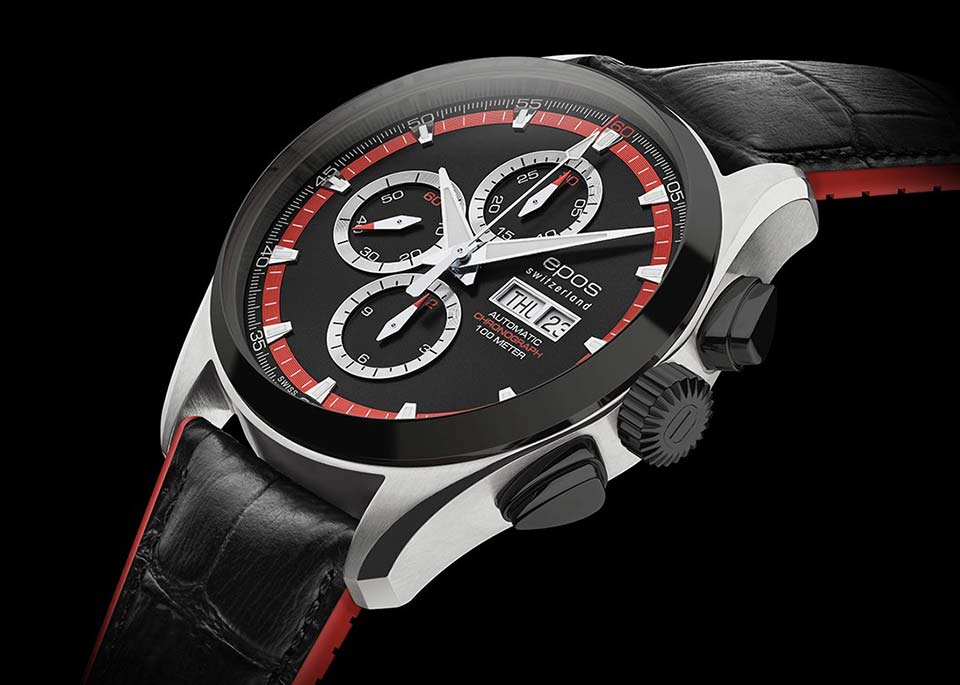
The Epos Sportive chronograph has a transparent case back. If you wish, armed with a magnifying glass, you can independently study the operation of the 7750, although to fully familiarize yourself with its device, you will need to disassemble hours, which is not recommended without special training.
Venus SA and Nouvelle Lemania should be noted among first-class movement manufacturers. Like Valjoux, these and other companies set the standard by which chronograph manufacturers still rely today. The two pusher chronograph with two or three additional dials, a column wheel and traditional horizontal gearing, which was formed in those days, is, if not an example of advanced technology, then at least the embodiment of the high classical traditions of watchmaking.
Of course, watchmaking does not stand still, and from time to time new solutions and new in-house chronograph movements appear, but as they say, classic is a guarantee against accidents, and many modern brands trust the accuracy of measurements to the well-proven ETA/Valjoux 7750 (it has been produced since 1974). of the year). This famous chronograph mechanism, for obvious reasons, you will find in a huge number of models of the Swatch Group (owns ETA), and these are the brands Hamilton, Rado, Longines, Certina and others, as well as in the watches of Sinn, Steinhart, Baume & Mercier, Speake-Marin, and under new names, which, after a slight revision, the 7750th is assigned to companies - and not to list.

